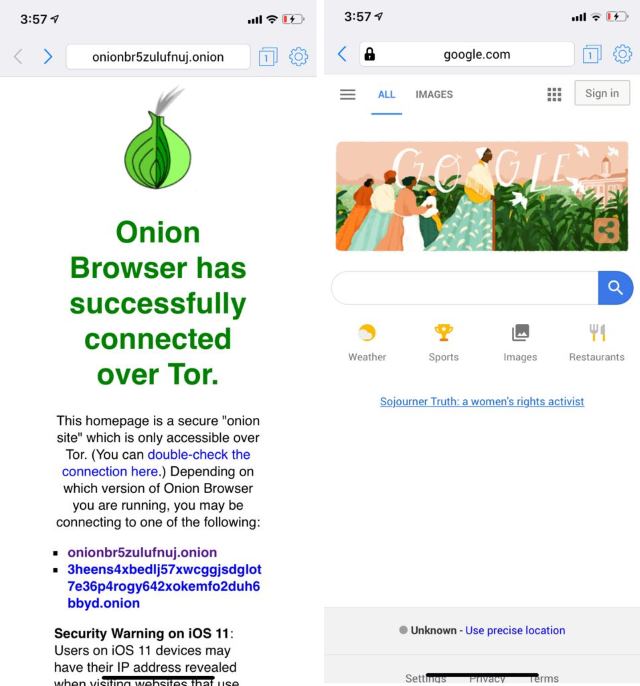

ONION BROWSER DOWNLOAD
Installing it is as easy as any other iOS app, although the creator of the Onion Browser, Mike Tigas, is charging 99 cents per download to recoup the costs of subscribing to the iOS Developer Program.īut as soon as you fire up the app, you get an explicit warning not to expect the same comforts as any other smartphone browser.

Yes, I know, my most recent post for Salon declared that online privacy tools are a joke, but it still seemed to me that taking a smartphone anonymizing browser out for a spin was the appropriate thing to do this week. While the Onion Browser is not officially affiliated with the Tor Project, it does "tunnel" through the same network of anonymizing relays that provide desktop Tor browsers with a cloak of secrecy. The Tor Project aims to provide Internet users with a secure, anonymous browsing alternative that will hide your online activities from government snoops or other Big Data crunchers. This is the year to try them out.After a week that saw the exposure of two major government snooping programs, there could be only one choice for "App of the Week": the Onion Browser for iOS, "a Tor-capable Web browser that lets you access the Internet privately and anonymously." But the options available to access the Tor network and use it more easily are rapidly expanding. The vision of Tor as the underpinning of the entire internet is still probably a long way off, if it can ever happen at all. "So we educate them on how many servers are okay for them to pitch in and if they want to add more they can donate to different nonprofits who run relays so they can still increase the network that way." "We don’t want any corporations to own a big part of the network," Bagueros says. But it also remains focused on the core concept of Tor as a distributed and decentralized network. The Tor Project has been working on ways to scale more efficiently in anticipation of eventually needing to meet this higher demand. With all this new private industry collaboration, the Tor Project's Bagueros says she thinks that more people will start using the service and be able to integrate it into their lives. "Other platforms can support this to get an advanced level of security for their users." Cloudflare's Tor integration is also set up to more accurately separate legitimate Tor traffic from malicious activity, by making it more costly for hackers to mount attacks without undermining anonymity protections for legitimate users. "If we can make it easier for more people to use Tor that's great," says Matthew Prince, Cloudflare's CEO. Through its new setup, Cloudflare helps to extend protections on user anonymity without knowing anyone's identity, even on its own service. Want more? Read all of WIRED’s year-end coverageĬontent delivery network and internet infrastructure provider Cloudflare also launched an onion service in September that makes it easier to access the most secure versions of its client sites on Tor. "Seeing interest and adoption from for-profit companies and other organizations is a very interesting moment for us, because we are creating different examples to show how our vision can be possible." "At the end of the day for Tor what we hope is that our technology becomes underlying, and everything else that happens online happens on top of it," says Isabela Bagueros, executive director of the Tor Project. You may even end up using the network without realizing it. But in 2018 a slew of new offerings and integrations vastly expanded the available tools, making 2019 the year to finally try Tor. In truth, Tor has been relatively accessible for years now, largely because of the Tor Browser, which works almost exactly like a regular browser and does all the complicated stuff for you in the background. Maybe between the nodes, traffic rerouting, and special onion URLs it seems too confusing to be worth the effort. You probably know about the digital anonymity service Tor, but for whatever reason you may not actually use it.


 0 kommentar(er)
0 kommentar(er)
